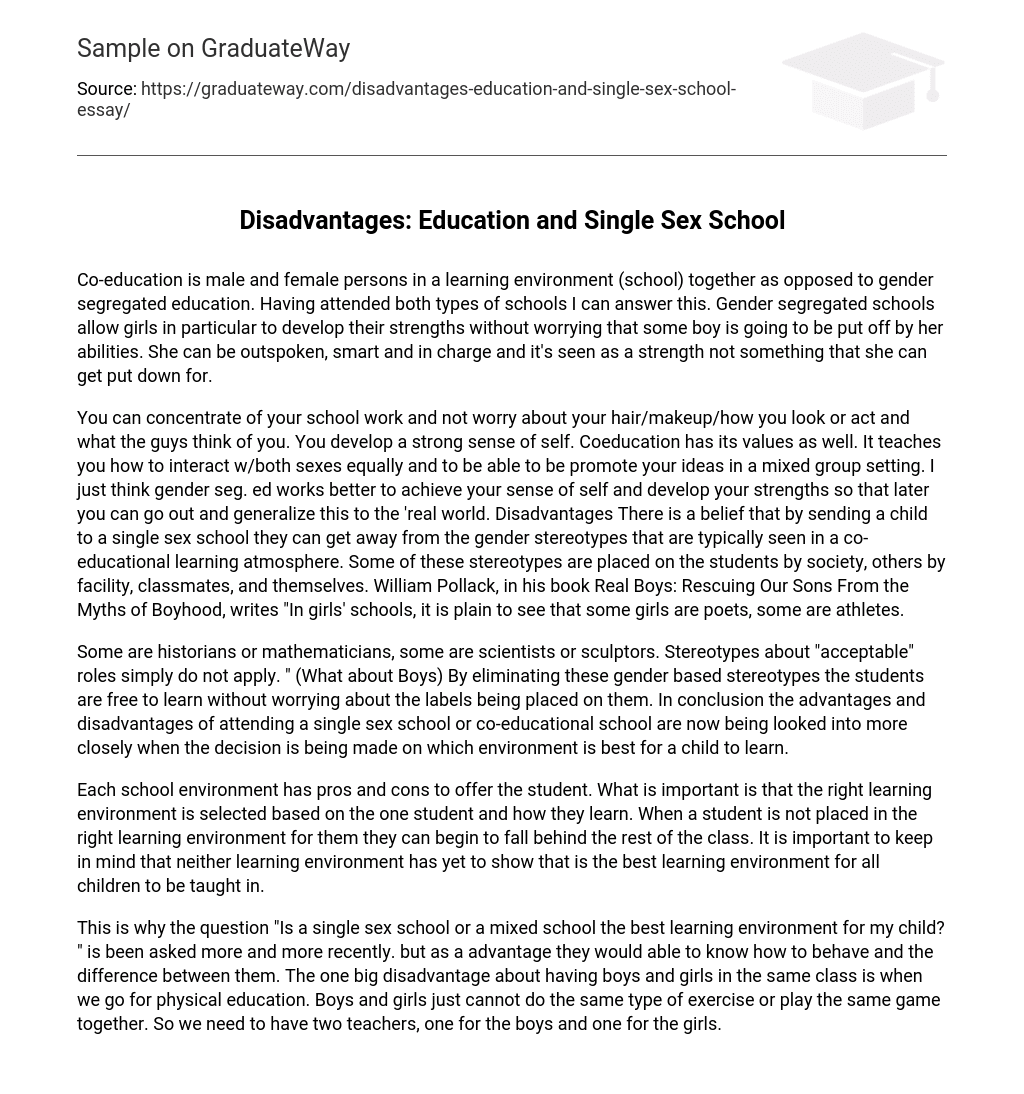Co-education, also known as mixed-gender schooling, involves the inclusion of both male and female students in a common educational setting instead of segregating them by gender. Having attended schools that followed both approaches, I can offer valuable perspective. In single-sex schools, girls have the opportunity to nurture their talents without worrying about discouraging boys based on their abilities. They can freely express themselves, showcase their intellectual capabilities, and assert their authority without facing any adverse consequences.
Attending a single-sex school allows you to focus on your academics without worrying about appearance or others’ opinions, fostering self-confidence. On the other hand, coeducation offers the opportunity to interact with both genders and express ideas effectively in mixed groups. Personally, I believe segregated education is more effective for individual development and later application in the real world. Nonetheless, single-sex schools can perpetuate gender stereotypes present in coed environments due to societal pressures, staff influence, classmates’ expectations, and students’ attitudes. William Pollack’s book “Real Boys: Rescuing Our Sons From the Myths of Boyhood” emphasizes that girls’ schools showcase diverse talents and interests among their students.
There is a wide variety of professions, such as historians, mathematicians, scientists, and sculptors. In this particular situation, stereotypes about acceptable roles do not apply. By challenging gender-based stereotypes, students can learn without limitations imposed by labels. Currently, there is a thorough evaluation of the advantages and disadvantages of single-sex schools versus co-educational schools to determine the best learning environment for children.
When it comes to schools, every environment has its own pros and cons for students. It is crucial to select the right learning setting that suits the student’s individual requirements and preferred learning style. If a student is placed in an unsuitable environment, they may face difficulties in keeping pace with their classmates. It is important to recognize that no learning environment has been definitively established as the superior method for educating all children.
The debate over whether single-sex schools or mixed schools provide the optimal learning environment for children is growing. Nonetheless, mixed schools offer the advantage of enabling students to learn proper behavior and comprehend gender differences. However, a drawback of having boys and girls in the same class arises during physical education, as they cannot engage in identical exercises or games together. Consequently, separate teachers are required for boys and girls.





